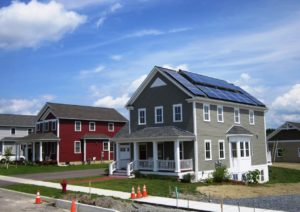
(Figure 1. Super insulated, net-zero energy home constructed by Sterling Homes.)
Established in 2008 with the help of Sterling’s own Collin Frisbie, the Vermont Green Home Alliance (VGHA) is an organization whose mission is to promote the use and construction of sustainable, high-performance residential buildings within the state of Vermont. On May 31st, the members of the VGHA met in Montpelier to discuss the latest goings-on in the green building community and to flush out possible leverage points for increasing the pervasiveness of residential green building in the state. One of the most important matters that was deliberated concerned the development of strategies aimed at increasing opportunities for green building educational outreach—both for future and current homeowners, as well as, the professionals who deal with the design, construction, appraisal, and sale of high-performance homes.
The first step in augmenting the extent of green building projects within the Vermont housing stock is to create consumer demand by proving to future and current homeowners that there are enormous benefits to building or buying a high-performance green building. One of the biggest barriers preventing people from investing in energy efficient homes is that they assume a high-performance home will cost significantly more than a conventional home, which is not necessarily true… Many buyers and homeowners don’t know that investing in green building is actually a great way to save money over time by ultimately paying less for energy. Although it can cost more money to build an energy efficient home due to increased high-performance materials costs, the potential day-to-day savings from the subsequent reduction in energy utility and maintenance costs allows a green building to make financial sense over the long-run. According to Jeff Gephart, a representative of VEIC and a founding member of the VGHA, “When financing the purchase of a new home or buying and improving an existing home, energy efficient features often create a positive monthly cash flow. While the monthly mortgage payment will increase, the average monthly energy costs can routinely be decreased to more than offset the increase in the mortgage payment. We need to look at total cost of ownership”.
One of the ways that the VGHA is educating buyers and homeowners is by working to document energy efficient features and improvements using standardized metrics like the Vermont Home Energy Profile. Jeff explains that “the Profile is an “asset” rating, like the MPG sticker on a new car – your mileage may vary, depending on how you drive. The Profile estimates the likely energy use and cost based on the efficiency features of the home. It models energy performance, is standardized for occupancy and weather, and is fixed over time”. Because this metric is a statewide initiative, it allows for a comparison between different buildings to be made easily. There are many different industry metrics for green building, a few examples include the National Green Building Standard (NGBS) and the Leadership in Energy and Environmental Design (LEED) metrics. The VGHA has made it one of its goals to help establish a universally used metric for the state of Vermont so that customers have a reliable platform on which to compare the energy efficiency of homes.
Another way that VGHA is spreading the word of home energy efficiency is by educating professionals. The people who customers are in contact with need to be able to give accurate and helpful information about building, buying and paying for high-performance homes. Two of the most important professionals to educate are Realtors® and appraisers. VGHA has created Realtor®-targeted courses that keep them up to date with current building science so as to better communicate the importance of green building features to potential buyers. Another demographic of professionals that the VGHA has also focused on educating are home appraisers. Many appraisers do not understand the merits behind green building and energy efficiency and because of that, their assessments often under-value high-performance homes. These courses are meant to enlighten appraisers to the fact that decreasing operational and utility costs through the use of high-performance features can add significant value to a home and is well worth the initial investment from the bank.
Education and outreach remains one of VGHA’s main challenges in the fight to improve the energy efficiency and reduce the environmental impact of residential buildings in Vermont. A reason why many consumers do not value green building practices on a larger scale is because prospective homeowners have simply never been given the information, much less the option, to build a high-performance home. By giving a buyer access to both knowledgeable professionals and specialized reports like the Vermont Home Energy Profile, The VGHA is helping give customers the tools and information needed to make smarter housing decisions.